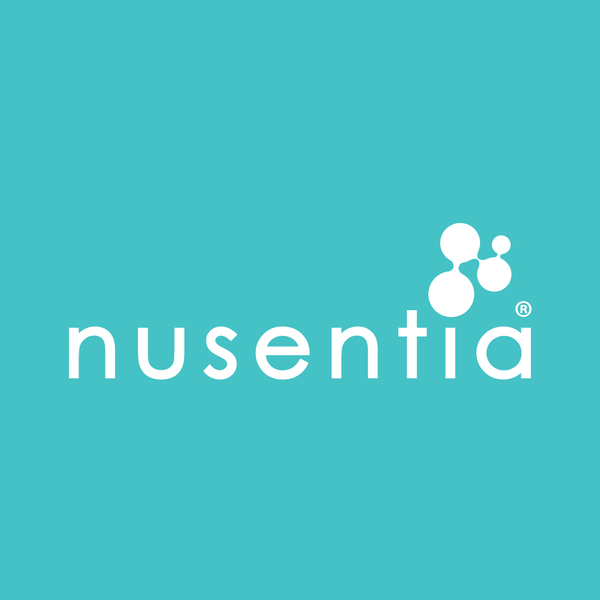Did you know that there is a well-studied substance known to be critical for long-term health in dogs and cats? Your pet may be missing it.
The benefits are the most wide-ranging of any nutrients we know. They help with the brain, the heart, with inflammation, and even appearance (skin and coat). Have you guessed what these essential nutrients are? If you said Omega-3 fatty acids you're right. Just like humans, pets need Omega-3 fatty acids, but most pets dont get them. Big mistake.
Omega-3 Fatty Acids
A critical nutrient for optimal health and fighting disease in dogs and cats, these amazing fatty acids work in every cell in your pet's body as foundational support for cellular function. Thousands of studies have been done in humans and animals showing their benefits.
Benefits for Skin and Coat
- Reduces hot spots
- Nourishes the coat for a natural sheen
Benefits for Inflammation
- Produces hormone-like substances known as eicosonoids that suppress inflammatory compounds such as PGE 2. In other words, a dog or cat diet rich in Omega-3 fatty acids will help reduce inflammation and allergy response.
Benefits Your Pet's Brain
- Supports brain developmentgreat for puppies.
- Decreases aging of the braingreat for senior dogs.
Benefits Your Pet's Heart
- Reduced inflammation (especially arterial)
- Supports healthy blood pressure levels in pets
- Supports lower triglycerides
- Reduced obesity, a catalyst for heart disease and diabetes
Support Healthy Aging
Omega-3 fatty acids help improve overall cellular function for pets as they maintain or improve telomere length.
What's a telomere, you ask? Telomeres are the endcaps of chromosomes and are associated with aging. Longer telomeres have been correlated to longer life. Omega-3 fatty acids are one of the only nutrients shown to have an effect on telomeres.
Pet Foods Are a Poor Source for Omega-3
We are not strong believers of getting Omega-3 fatty acids from pet food. There are problems with rancidity, unless the Omega-3s are microencapsulated into the food. This can be done, but it is quite expensive. If a pet food has it in there, yet is affordable to buy, it becomes questionable. Additionally, the inclusion of Omega-3s can be window dressing as there often is not enough put in the food to make it useful.
Omega-3 is Best Supplemented in Liquid Form
Liquid supplements have always been our choice because they provide better value and are a safer and more effective delivery system, and are much easier to use for pets. The 12-point quality control process makes Celavin the omega-3 supplement of choice for pets.
Celavin Quality
We work with one of the most prestigious manufacturers of fish oil in the world. Celavin™ is manufactured at one of only four pharmaceutically-licensed facilities on the planet, recognized as an industry leader. The process that Celavin undergoes to ensure that it is a high-quality product that delivers all the benefits of fish oil without any contaminants, we employ multiple refining steps. Each processing step is followed by analysis to ensure that the quality parameters aimed for was achieved before proceeding to next step. The final product is thoroughly analyzed to ensure compliance with specification before release.
-
Molecular distillation
removes, under high vacuum, free fatty acids and environmental contaminants. -
Cold filtration (winterization)
removes, in a closed-filter press, solid fat precipitated after cooling the oil to about 3 degree centigrade. -
Organic filtration
reduces, to a minimum, certain types of pesticides, heavy metals, and coloring items. The oil is mixed with clay under nitrogen atmosphere followed by filtration in a closed filter system. -
Deodorization
removes volatile parts of the product responsible for unpleasant smell and taste. The oil is heated under high vacuum, and steam is passed through the oil. -
Molecular distillation
is also used when concentrates of EPA and DHA are made. The process removes, under high vacuum a substantial fraction of fatty acids with a shorter chain length than the omega-3 acids EPA and DHA. -
Triglyceride synthesis.
Transferring ethyl esters to triglycerides (natural oil form). Reaction is catalyzed by enzymes. -
Blending:
The addition of antioxidants and desired flavors round out this fish oil.
Because Celavin is ultra-pure, and delivers such great value and ease of dosing, your pet can get the maximum benefits of Omega-3.
- Healthy and Beautiful Coat
- Reduced inflammation
- Support for the brain
- Improved heart health
- Overall cellular function for healthy aging
Cites and References
Nutr Res Rev. 2007 Dec;20(2):180-94. Impact of nutrition on canine behaviour: current status and possible mechanisms. Bosch G, Beerda B, Hendriks WH, van der Poel AF, Verstegen MW. Am Vet Med Assoc. 2010 Jan 1;236(1):67-73. Evaluation of the effects of dietary supplementation with fish oil omega-3 fatty acids on weight bearing in dogs with osteoarthritis. Roush JK, Cross AR, Renberg WC, Dodd CE, Sixby KA, Fritsch DA, Allen TA, Jewell DE, Richardson DC, Leventhal PS, Hahn KA. Res. 2008 Apr;69(4):486-93. Effects of dietary supplementation with fish oil on in vivo production of inflammatory mediators in clinically normal dogs. LeBlanc CJ, Horohov DW, Bauer JE, Hosgood G, Mauldin GE. Anim Physiol Anim Nutr (Berl). 2005 Apr-Jun;89(3-6):203-7. Essential fatty acids supplementation in different-stage atopic dogs fed on a controlled diet. Abba C, Mussa PP, Vercelli A, Raviri G. J Nutr. 1998 Dec;128(12 Suppl):2783S-2789S. Diet and skin disease in dogs and cats. Watson TD. Omega-3 fatty acids in cardiovascular disease. Freeman LM. J Small Anim Pract. 2010 Sep;51(9):462-70. doi: 10.1111/j.1748-5827.2010.00968.x. Epub 2010 Jul 29. Review. Marine omega-3 fatty acids and coronary heart disease. Calder PC, Yaqoob P. Curr Opin Cardiol. 2012 Jul;27(4):412-9. doi: 10.1097/HCO.0b013e328353febd. Review. [From cardiovascular prevention to anti-aging medicine: influence on telomere and cell aging]. Gleichmann U, Gleichmann US, Gleichmann S. Dtsch Med Wochenschr. 2011 Sep;136(38):1913-6. Epub 2011 Sep 13. Review. German. Differential effects of omega-6 and omega-3 fatty acids on telomere length. Kang JX. Am J Clin Nutr. 2010 Nov;92(5):1276-7; author reply 1277. Epub 2010 Sep 15. Effect of omega-3 polyunsaturated fatty acids and body condition on serum concentrations of adipokines in healthy dogs. Mazaki-Tovi M, Abood SK, Schenck PA. Am J Vet Res. 2012 Aug;73(8):1273-81. Effect of omega-3 fatty acids on serum concentrations of adipokines in healthy cats. Mazaki-Tovi M, Abood SK, Schenck PA. Am J Vet Res. 2011 Sep;72(9):1259-65. Effect of dietary omega-3 polyunsaturated Fatty acids on heart rate and heart rate variability in animals susceptible or resistant to ventricular fibrillation. Billman GE. Front Physiol. 2012;3:71. Epub 2012 Mar 27. Therapeutic use of fish oils in companion animals. Bauer JE. J Am Vet Med Assoc. 2011 Dec 1;239(11):1441-51. Review


